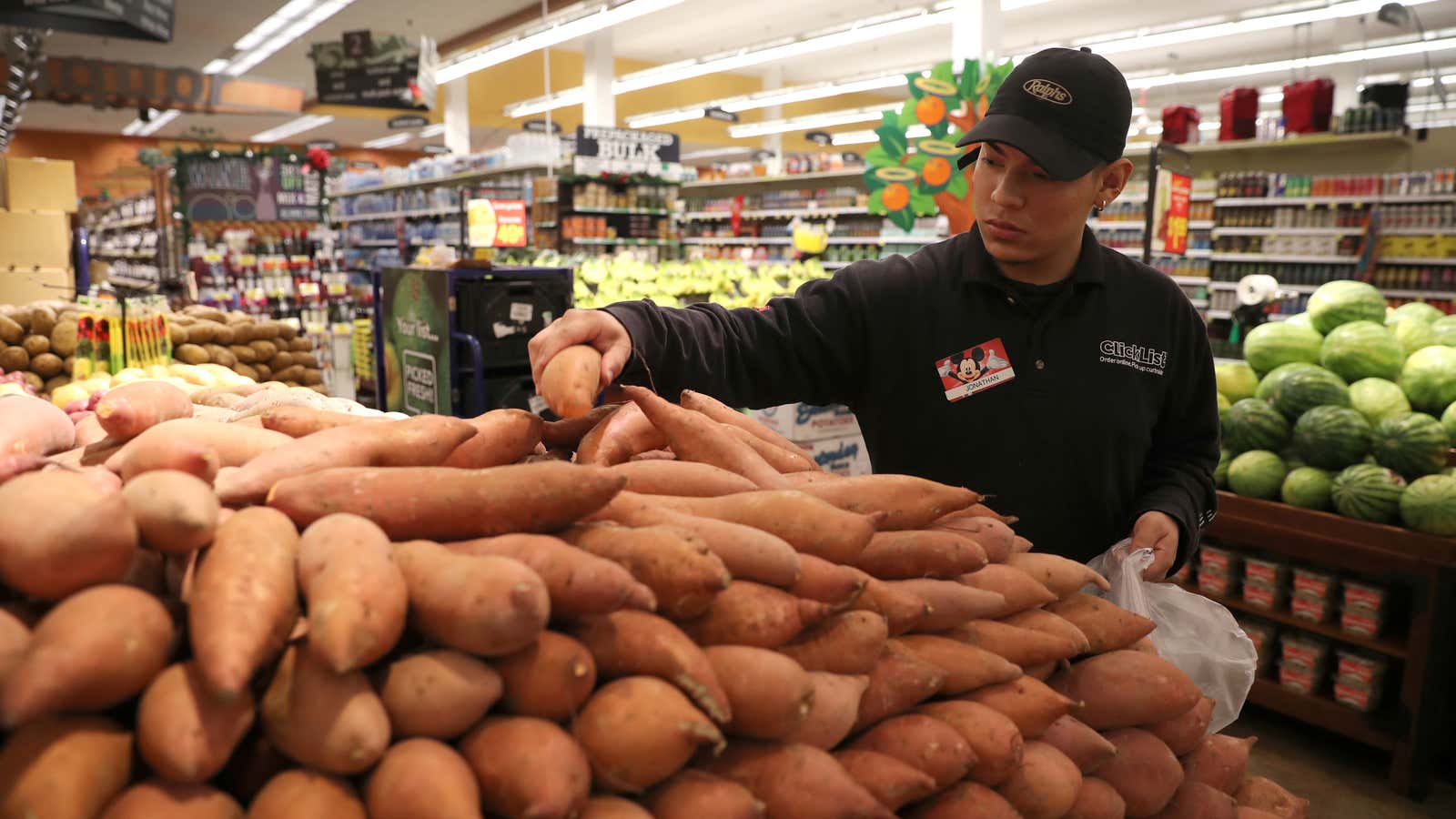The Blue Apron box from hell. That’s how the internet has been characterizing the Trump Administration’s bright idea to replace benefits from the Supplemental Nutrition Assistance Program, or SNAP, with a “USDA foods package.” Shelf-stable milk, canned fruits, vegetables and meat, and yes, government cheese, (but no fresh fruits or vegetables) were among the grocery items the Trump Administration would include in the “USDA Harvest Box” outlines in the President’s proposed budget for 2019.
Set aside, for a moment, that this plan (as well as several other in Trump’s budget) takes choice away from people who already face limited options in many aspects of their lives, is tone deaf to the reality that what we eat is deeply personal, champions items that are high in fat and low in vitamins and fiber—and seems cumbersome to implement. Oh, and then there’s this fact: the Harvest Box program fundamentally misunderstands the role the poor play in the economy.
A “Government Cheese” renaissance https://t.co/W4uQ91bvcQ
— Col. Morris Davis (@ColMorrisDavis) February 13, 2018
Government cheese jokes aside, much of the furor over this proposal has framed it as the government deciding what poor people should eat. That’s certainly part of it. More concretely though, by considering poor people to be economically non-actors, the government is proposing to take billions of dollars away from grocery stores, bodegas and farmers markets around the country. The poor may have less money to spend than their peers in other socio-economic brackets. But there’s a big difference between some and none, which this budget seems not to grasp.
As it functions now, SNAP recipients get a preloaded EBT card they can use to purchase any food that conforms to a fairly broad set of USDA guidelines. There’s a long and frankly ugly debate over food stamp fraud and whether public dollars should pay for private pleasures, like chips, soda and ice cream, but all of that ignores the other end of the transaction. To a bodega owner or a grocery store chain an EBT card is the same as cash money, and that’s to say, an important revenue stream.
The White House estimates that the Harvest Box would save taxpayers $129 billion over a decade. In reality, that would actually be money that’s simply erased from local economies. It’s debatable whether tax breaks to the rich and even the middle class stimulate the economy or get parked in savings accounts. EBT food credits do stimulate the local economy, full stop. Even food stamps that are traded fraudulently or illegally—critics love to point to this when making a case against the program—eventually go to a business because there can be no other end user.
Whether or not you believe that $129 billion number, it’s undeniable that SNAP recipients have a lot of buying power. A 2017 report from the Food Bank for New York City titled Trade Offs at the Dinner Table: The Impacts of Unwanted Compromises found that in New York City alone, SNAP made close to $3 billion in food purchases possible each year.
SNAP users are not limited to urban areas, either. The Food Research and Action Center analyzed SNAP usage by county and found that on average 13% of households in urban counties use SNAP, while 16% in rural counties do. Small towns are likely to be hit even harder by any policy that removes dollars from cash registers at grocery stores. Decreased revenue can lead to work force reductions and the loss of working class jobs in towns already blighted by limited employment opportunities.
In a rare, if temporary, collision of interests with mom-and-pop businesses, Amazon and Walmart and their considerable political power may prevent this “food package” program from ever coming to fruition. Amazon Fresh has tentatively made a play for SNAP dollars, offering Prime subscriptions at a lower cost to potential members with EBT cards, and Walmart is the largest grocer in the US.
Whether on the left or right, a presidential budget proposal is far more of a glimpse into an administration’s priorities than actual finished policy. But while Trump’s budget may never actually see the light of day, his “food package” scheme suggests not only does the president have contempt for the poor, he has little understanding of how money actually works.
